A few days ago, I mentioned that I love old needlework books, and that I’ve been reading through a few lately. This is a self-inflicted program of study, of sorts. There are things I want to know, and I suspect I will find out these things in old books.
This particular collection of old books that I’m currently reading through came about shortly after reviewing Early 20th Century Embroidery Techniques, by Gail Marsh. If you haven’t read this book yet, I highly & enthusiastically recommend it! Even if the style of embroidery isn’t “you,” there’s a lot to learn in those pages, about the work (the real work!) of keeping embroidery alive. It’s really a good book, and an interesting social commentary.
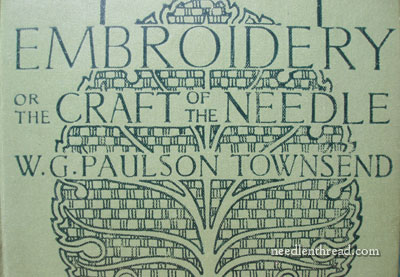
After I reviewed Early 20th Century Embroidery Techniques, I got a lovely e-mail from Bobbi Chase, who was in the process of going through her needlework library. Well, she happened to have several of the titles that Gail Marsh used as sources – and she had duplicates of some! And being the kind and lovely person she is, she offered me the duplicates.
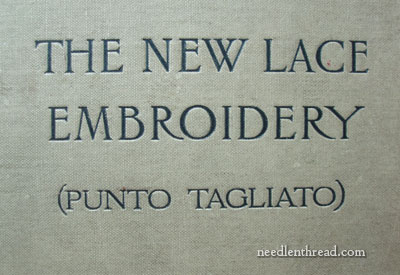
And you know, when she contacted me about these books, I jumped up and down with glee! Not only am I obsessed with old needlework books, but I am particularly keen to read books from this era.
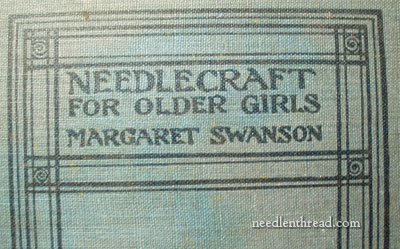
Do you know why? Because these people have something to say! They aren’t just teaching a technique. They aren’t just offering step-by-step photos of someone else stitching. They do teach technique, they do offer instruction. Some of the books are more technique-oriented than others in the lot. But they offer more than just technique.
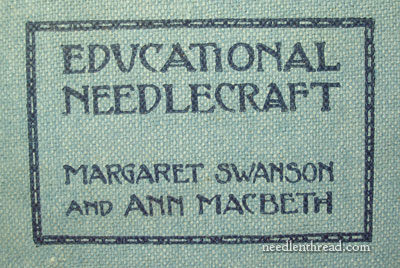
They are actually saying something about needlework: about its importance in our cultural heritage, about its importance today, about the necessity of preserving needlework, about the ways in which it can be passed down to future generations. And much more. They say much more.
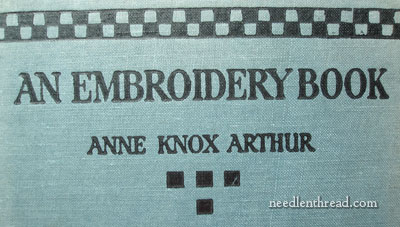
These are some of the folks that were involved in the great revival of the needle arts during the Arts & Crafts movement. They belonged to the Needlework Thinktank of the age. And reading their own words, I hope to learn something from them.
Thanks so much, Bobbi, for sending me the books! I will put them to good use, I promise!
Most of these books are available online, if you’d like to read them, too. And most of the sites where I found them offer them in epub format, so if you have an electronic reader, you can download them for free for your reader. Here’s the list:
Embroidery, or the Craft of the Needle – by W. G. Paulson Townsend
The New Lace Embroidery (Punto Tagliato) by L.A. Tebbs
Educational Needlecraft by Margaret Swanson and Ann Macbeth
An Embroidery Book by Anne Knox Arthur
The only one I didn’t find online is Needlecraft for Older Girls by Margaret Swanson. If you happen to come across it available online, will you let me know?
I hope you enjoy these, too!







Project Gutenberg has some too…
Prehistoric Textile Fabrics Of The United States, Derived From Impressions On Pottery stock_book_yellow-16.png by William Henry Holmes (1846-1933)
A Study of The Textile Art In Its Relation To The Development of Form and Ornament stock_book_yellow-16.png by William Henry Holmes (1846-1933)
Chats on Old Lace and Needlework stock_book_yellow-16.png (English)
Handicraft for Girls
A Tentative Course in Needlework, Basketry, Designing, Paper and Cardboard Construction, Textile Fibers and Fabrics and Home Decoration and Care stock_book_yellow-16.png (English)
Art in Needlework stock_book_yellow-16.png (English)
The Art of Needle-work, from the Earliest Ages stock_book_yellow-16.png (English)
Beeton’s Book of Needlework stock_book_yellow-16.png (English)
Chats on Old Lace and Needlework stock_book_yellow-16.png (English)
The Development of Embroidery in America stock_book_yellow-16.png (English)
Embroidery and Tapestry Weaving stock_book_yellow-16.png (English)
Encyclopedia of Needlework stock_book_yellow-16.png (English)
English Embroidered Bookbindings stock_book_yellow-16.png (English)
Handbook of Embroidery stock_book_yellow-16.png (English)
Jacobean Embroidery: Its Forms and Fillings Including Late Tudor stock_book_yellow-16.png (English)
Needlework As Art stock_book_yellow-16.png (English)
The Ladies’ Work-Table Book stock_book_yellow-16.png (English)
The Tapestry Book stock_book_yellow-16.png (English)
Sorry this is long but I wanted to share these and not be selfish – all can be read online or saved to you computer then sent to an e-reader. There may be more on Libervox.
sorry, typo it’s Librivox.org
Dear Mary,
Thank you for giving us access to such wonderful works of reference. They are informative and quite enjoyable (I’ve already scanned some). I love teaching books, such as McGuffey’s Eclectic Primer and 19th century books on sewing for little girls, so these are quite a treat.
And thank you, also, Heather, for doing the work for us by pointing out some very good books. One can get lost looking at the Project Gutenberg website!
Blessings to you both,
DorisHH
So I have been wondering what others think of the statement below by Wm. Morris? What was it that influenced him to see art this way?
“The first thing necessary to be taught is to see. The late William Morris said,
There are two things to be done by the seers for the non-seers : the first is to show them what is to be seen on the earth ; the next is to
give them opportunities for producing matters, the sight of which will please themselves and their neighbors, and the people that come after them to train them, in short, in the observation of beauty and incident.” The sooner the worker can be made to see how wrong it is to try to imitate the natural appearances of flowers and plants in embroidery, the better. ”
As for me, I prefer the closer proximation to the real thing. Somehow many examples of embroidery and artwork form that era seem two dimensional in a way that is leaving out a living component. Something is missing and I can’t quite put my finger on it. And as you can tell this study is new to me.
Just wondering…
Hi, Mary Amazon UK and abebooks.co.uk/ both have the needlecraft for older girls by Margaret Swanson but abebooks has an original copy at an appropriate price and amazon have a used copy for $30 or so.
Without wanting to sound like the old man that my kids think I am, those books were written when needlework was needlework – and that’s why they are so so valuable in what they can teach us.
Dear Mary,
I bought the Gail Marsh book after reading your review. I’m so glad that I did! Right away I began searching for the books but the women and men whose work Marsh profiles. I’ve had a great deal of fun exploring the world of old embroidery books. Thank you for your encouraging review and this wonderful website.
Last night I went to bed at 10:30 but woke up an hour latter and the only thing in my mind wwere the Old needlework books I was’t able to see the day before. So I silently went to the studio and took a look at them. Well, I spent most of the time with the “Embroidery or the Craft of the Needle” I finished at 2:30 and went to bed. I loved it. Thanks for sharing this treasures with us!
Thank you so much for the e-reader sources. I love the history of embroidery and can’t wait to settle in with my reader and the new books. 🙂